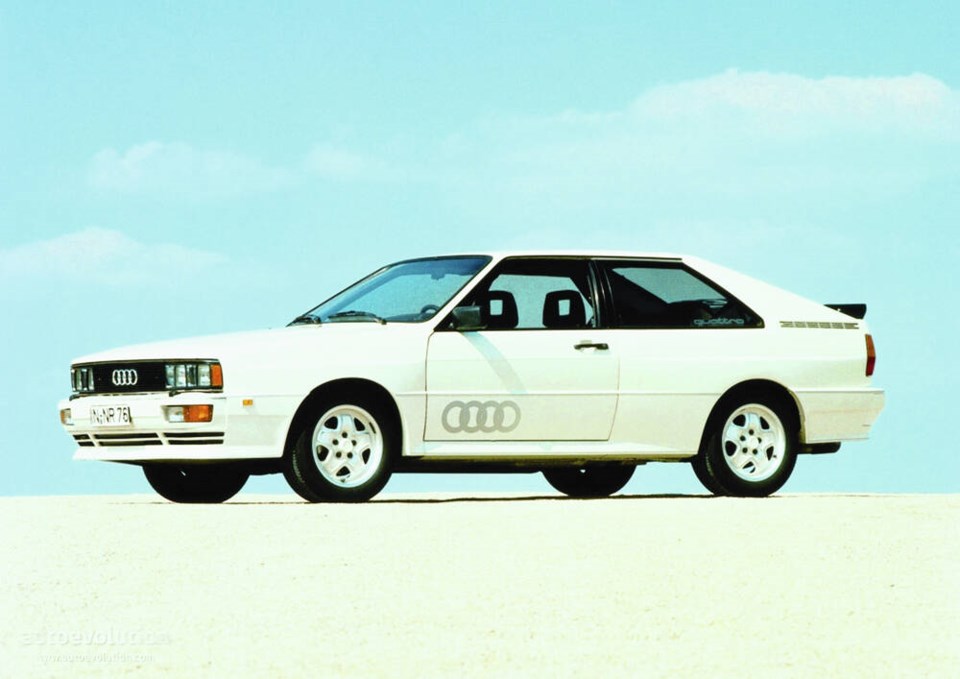The birth of four-wheel drive could be traced to about 1902 when significant events occurred on both sides of the Atlantic. In Amsterdam the Spijker company built an 8.7-litre, six-cylinder Spyker car (name simplified for commercial reasons) with 4wd. It was reputed to be the world’s first.
In the United States the Aultman Co. of Canton, Ohio experimented with a 4wd steam truck while the Cotta Automobile Co. of Rockford, Ill., built a light steam car in 1902 with central engine and chain drives to all four wheels.
At about this time the Columbia Co. built an electric truck, probably in Hartford, Conn., with an electric motor in each wheel. Power steering was achieved by powering a front axle “fifth wheel.”
These pioneering projects were, however, preliminary to what occurred in Clintonville, Wisconsin when blacksmith Otto Zachow obtained the Reo car franchise in 1905. While demonstrating a Reo, Zachow slipped off the road and discovered he had better traction in reverse than forward. Why not, he reasoned, use front-wheel or even four-wheel drive.
The ingenious blacksmith fabricated a 4wd system and young local lawyer Walter Olen helped Zachow patent his invention in 1908. They started business together building all-wheel drive vehicles.
Initially called the Badger Four Wheel Drive Auto Co., soon changed to FWD Co., their first car was a White steamer fitted with Zachow’s 4wd. While traction was impressive when ploughing through snowdrifts there were no buyers.
They then installed 4wd in a large gasoline-powered car nicknamed the Battleship and offered a $1,000 prize to any car that could match its go-anywhere ability. There were no orders at the $4,500 price.
Prospects appeared bleak for four-wheel drive until war clouds began gathering in Europe. The British army wanted motorized high traction capability, and after conducting tests on some FWD vehicles they took two FWD trucks to England for further evaluation.
Testing convinced the British and they ordered 50 more FWD trucks. It was the turning point for FWD and its competitor, the Thomas B. Jeffery Co. of Kenosha, Wis. (later Nash Motor Co.), manufacturer of the 4wd Quad. They ultimately supplied thousands of 4wd military trucks for the First World War and to General John Pershing for his U.S.-Mexican Expedition.
The end of the war almost meant the end of FWD Co., but it managed to survive supplying parts for war-surplus FWD trucks, and making 4WD utility and construction trucks.
Marmon was another 4wd player. After the Marmon car died in 1933, the Marmon-Herrington Co. of Indianapolis carried on producing 4wd conversions for trucks, principally Fords.
It would take war to once more revive the fortunes of 4wd. With conflict again threatening Europe in the late 1930s, the U.S. military realized it would likely become involved.
The army wanted a small, manoeuvrable, go-anywhere vehicle, and in 1940 the army ordnance technical committee drew up specifications for a quarter-ton, utility vehicle that ultimately became known as the Jeep. Its most important requirement was 4wd. Four-wheel steering was considered, but abandoned.
With a herculean effort the American Bantam Car Co. of Butler, Penn. delivered a prototype within a half-hour of the extremely short 49-day deadline. It would have won but unfortunately Bantam’s production facilities were judged inadequate for the military so it selected the Willys model built by Willys-Overland, and by Ford under licence.
Jeeps proved so valuable during wartime and established so much goodwill that at war’s end Willys-Overland abandoned cars to concentrate on civilian Jeeps, Jeep station wagons and the sporty Jeepster phaeton convertible.
Staying with Jeeps was a wise move. Although Willys Overland was later acquired by Kaiser-Frazer, the Jeep’s popularity continued and Jeep became synonymous with 4wd
Through the 1950s and ’60s 4wd was still viewed as most suitable for utility, heavy duty and other off-road use. Although tried on racing cars, including Indianapolis and Formula 1, it didn’t flourish.
The English Jensen Motor Co.’s 1966 to 1972 Interceptor FF passenger car used a 4wd system from farm implement builder Harry Ferguson. They were very expensive and had limited sales.
Then in 1977 Japan’s Subaru offered an on-demand 4wd system in a mass market car. Their 4wd station wagon came to Canada in 1979. This was followed by American Motors with the popular 4wd Eagle and Audi’s advanced Quattro system. Quattro dominated rallying competition, became an Audi hallmark and did much to popularize 4wd.
Four-wheel drive received a big boost with the rise in popularity of sport utility vehicles, a class fathered by the Jeep. It has gained wide acceptance in cars where it is so well integrated there is no outward evidence of its presence, and so sophisticated it is transparent to drivers. Four-wheel drive is far from new; it’s almost as old as the car itself.


